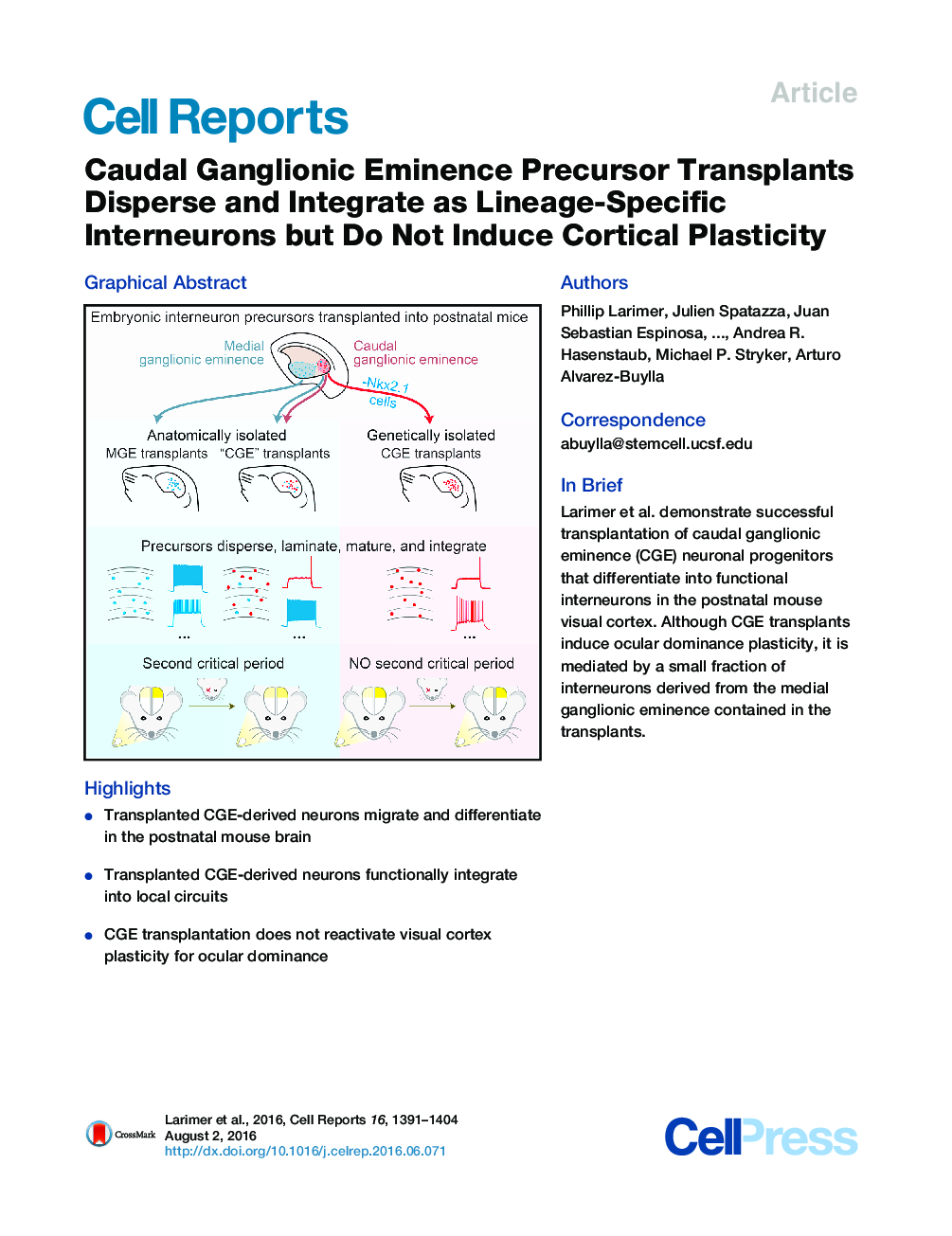| Article ID | Journal | Published Year | Pages | File Type |
|---|---|---|---|---|
| 2041208 | Cell Reports | 2016 | 14 Pages |
•Transplanted CGE-derived neurons migrate and differentiate in the postnatal mouse brain•Transplanted CGE-derived neurons functionally integrate into local circuits•CGE transplantation does not reactivate visual cortex plasticity for ocular dominance
SummaryThe maturation of inhibitory GABAergic cortical circuits regulates experience-dependent plasticity. We recently showed that the heterochronic transplantation of parvalbumin (PV) or somatostatin (SST) interneurons from the medial ganglionic eminence (MGE) reactivates ocular dominance plasticity (ODP) in the postnatal mouse visual cortex. Might other types of interneurons similarly induce cortical plasticity? Here, we establish that caudal ganglionic eminence (CGE)-derived interneurons, when transplanted into the visual cortex of neonatal mice, migrate extensively in the host brain and acquire laminar distribution, marker expression, electrophysiological properties, and visual response properties like those of host CGE interneurons. Although transplants from the anatomical CGE do induce ODP, we found that this plasticity reactivation is mediated by a small fraction of MGE-derived cells contained in the transplant. These findings demonstrate that transplanted CGE cells can successfully engraft into the postnatal mouse brain and confirm the unique role of MGE lineage neurons in the induction of ODP.
Graphical AbstractFigure optionsDownload full-size imageDownload as PowerPoint slide
